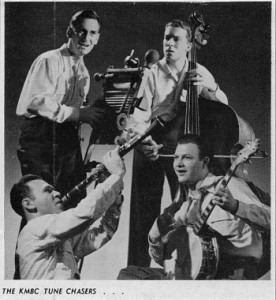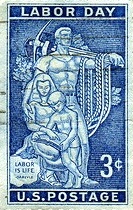 Every fall and spring since 1989, Johnson County Community College holds the Ruel Joyce Recital series. Offered as a free event for the public, the series brings together local classical musicians from the KC Metro area for a low-key performance. The series was created to honor Ruel Joyce, remembered by many as a talented classical musician and head of the local musician’s federation from 1977 until his death in 1989.
Every fall and spring since 1989, Johnson County Community College holds the Ruel Joyce Recital series. Offered as a free event for the public, the series brings together local classical musicians from the KC Metro area for a low-key performance. The series was created to honor Ruel Joyce, remembered by many as a talented classical musician and head of the local musician’s federation from 1977 until his death in 1989.
What the public seems to have forgotten is that Ruel Joyce was also a member of the Tune Chasers, a musical group featured often on KMBC radio. Any sampling of the Tune Chasers would demonstrate their versatility as performing artists. The majority of their sound is of a classical or jazz-like nature, but include uncommon instruments like the xylophone and washboard. They covered a number of popular folk songs and silly novelty numbers like “Grandpappy (He’s a champeen a-spittin’ down a crack).”
Additionally, the Tune Chasers contributed to the war effort in the 1940s by singing upbeats songs like “Shut my mouth (for Uncle Sam),” “There’s a helmet on my saddle,” and “Little Bo Peep has lost her jeep.” During the height of their popularity at KMBC, they not only had their own time slot every week, but they also guest starred on other KMBC programs like “Night time on the trail.”
The members of the Tune Chasers also played what I consider to be an abnormally large number of instruments. Ted Painter played double bass, guitar, and banjo. Vaughn Busey played the clarinet in virtually every song, but also played the sax and drums. Our friend Ruel Joyce played double bass, guitar, and sang vocals. The leader of the Tune Chasers, Charley Pryor, played drums, vibraphone, xylophone as well as a customized musical washboard. Playing nine instruments between its members, it is clear that the Tune Chasers had talent.
So why doesn’t anyone remember them? Perhaps their largely instrumental repertoire was a factor. The Tune Chasers played a number of local gigs in the KC Metro area, but don’t seem to have headlined any of them. Very little evidence of the Tune Chasers exists outside of their musical collection. Among the little bit of evidence we have found is a concert review from the February 18, 1948 issue of Variety Magazine. In the review, the Tune Chasers played at an outdoor concert that flopped. At $1 a head, the concert barely made $2000. Further, it seems that the members didn’t go on to bigger things after the Tune Chasers. The only name that actually makes a hit on the internet these days is Ruel Joyce, and that is only because of the local recital series. It’s rather
depressing: a truly talented musical group fades away over the years until all that’s left is a music festival, and the event description doesn’t even mention the group name.
Click here for a listing of Tune Chasers music in the Marr Sound Archives.
Christina Tomlinson, KMBC Project staff/History (MA) student

